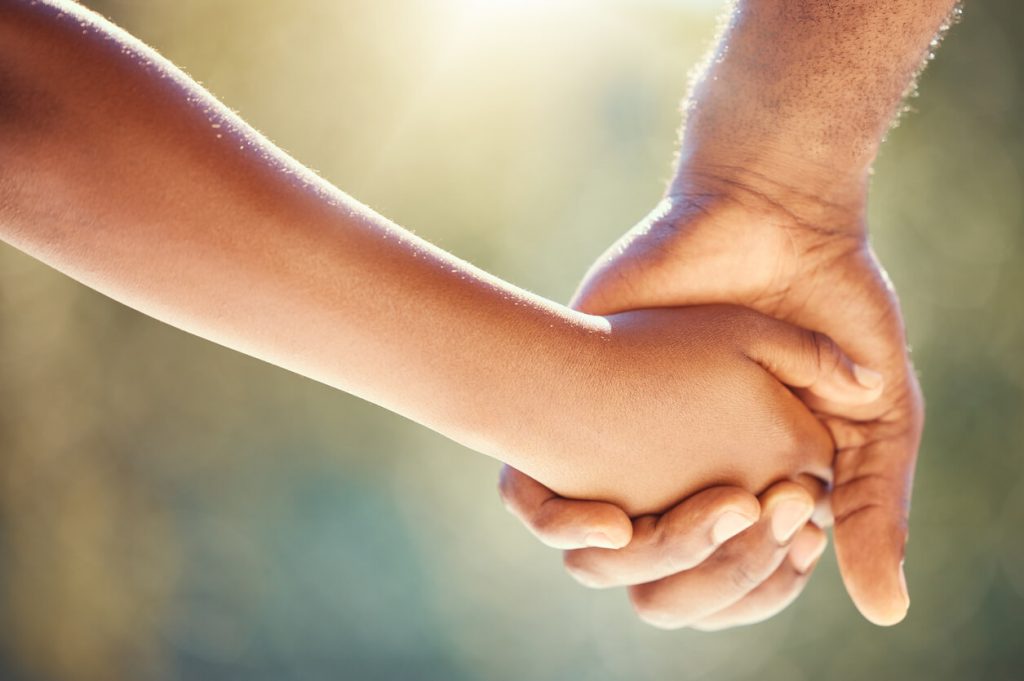“I first saw pornography when I was 6 when I found a pornographic video in my older brother’s room. I kept watching pornography here and there from that point on. My parents didn’t sit me down to talk about pornography until I was 13. That one talk helped for a little while, but it didn’t prepare me to resist pornography when I moved out. Then, it all started over again and got a lot worse.”—Tim, age 23, 2019
When to Start the Conversation
Many parents approach the topic of pornography only when they find out that their child has been viewing pornography. Other parents wait until their child enters the teen years. In today’s world, neither approach is a good solution, because children are being exposed to pornography at increasingly younger ages.
The goal as a parent-ally is to prepare our children to know what to do when they encounter pornography, before they are exposed. According to college student surveys in 2009, one-half of boys and nearly forty percent of girls have seen pornography by the age of twelve[1].
Today, young children need to know what to do when they encounter pornography, before it’s too late.
How Often to Discuss Pornography
Even after starting the discussion, parents often worry that they might be encouraging a child to seek out pornography if it is talked about too often. Our experience, however, is that it is usually what our children hear from other children that makes them curious. A parent/child conversation about porn does not usually create that kind of enticement.
Throughout the year, children in schools practice what to do in the case of a fire or earthquake. This is to ensure that they react quickly and correctly in case of a real emergency.
Likewise, we want our children to have enough practice to react appropriately when they see pornography. That can only happen with repeated training. Like any other safety training for children, discussions about pornography need to happen several times a year.
What to Say About Pornography
Define it. We first have to explain, in very simple and non-graphic terms, what we are talking about. Here are some examples of what that might look like:
- “Pornography is pictures of people with no clothes on.” This is a simple definition and may be the easiest for younger children to understand. However, some parents may decide this is too broad and can include things that are not actually pornography.
- “Pornography is pictures of people with few or no clothes on that make you feel embarrassed, sick to your stomach, or excited.” This provides a way to help slightly older children differentiate an immodest image from pornography. This is slightly more precise but removes the need to talk about pornography’s intent on sexually stimulating the viewer.
- “Our bodies are good, but certain parts of them are special and private. Pornography is when someone takes naked pictures or videos of people that should be private and shares them with everyone.” This is a great way to connect conversations between the dangers of pornography and personal privacy.
- “Pornography can include any image or video that is sexual or sexually suggestive.” As our children reach adolescence, they are ready to identify pornography by its intent, not just the fact that some skin may be showing. We also have to recognize that for some children, any partially nude image may be erotic and affect them in similar ways that hard-core pornography does.
- “Pornography is any writing, imagery or video that was created to intensify sexual feelings.” This broadens the category of pornography for adolescents and teenagers. By this age, they understand sexual feelings and can use them to help them identify if something they encounter is pornographic to them.
Explain why pornography is harmful. We are not talking about scare tactics, which don’t work well with most kids. However, if we want kids to reject pornography, they need a few reasons why they should. After all, without reasons to avoid it, pornography will become too enticing for most kids to resist in adolescence.
- “Pornography takes what was meant to be private and makes it public.” This may help younger children understand how harmful pornography really is. Young children learn what private means as we teach them to protect their bodies. We can expand those lessons by explaining how pornography is a violation of such privacy.
- “Many people depicted in pornography didn’t really want pictures of themselves shared like this. It is not fair to look at pictures of people who didn’t want to be shown naked.” This is a slightly more detailed explanation for middle school-age children to help them have empathy for people exploited through pornography. It is true that many of the people depicted in pornography were coerced or forced to participate. Children deserve to know this when they are old enough to understand.
- “Pornography teaches us that sex is about taking. Using people for sex is abuse and not something we should support or watch.” A very high percentage of modern porn portrays and promotes unhealthy sexual attitudes, outright abuse, and assault. Adolescents are old enough to have such a conversation with. They need to understand that pornography should be rejected because of the harm it does to those it portrays, as well as the attitudes it reinforces.
- “Pornography treats people like sex objects who have no feelings. This is not how we treat people.” Our adolescents need to understand that most pornography is little more than third party sex trafficking. Adolescents are capable of great empathy, and for some, this will give them very high motivation to resist pornography.
Train children how to react. Once our children understand what pornography is, we need to help them know what to do when they see it. They need instructions that are simple and perfectly clear.
- “Close your eyes.” The first reaction is to stop looking. Closing their eyes is the fastest way to do that.
- “Get away.” They need to get away from the source of pornography immediately, no matter where they are.
- “Come tell me.” If they are older and have a phone, you might tell them to text or call you. For situations where a child cannot reach you, we might teach them to tell the nearest, safe adult. Then, they should tell you as soon as they can.
Remember, we shouldn’t teach these tactics just once. From time to time, we ask as a reminder, “What do we do when we see pornography?”
Here is a real story of how this works.
“My dad taught me what pornography was and what to do when I saw it when I was eight. The first time I encountered pornography was age nine at a sleepover with a boy from church who lived down the street. When I realized what he was trying to show me I knew exactly what to do. I got up and walked home, even though it was night.” —Jason, age 36
Talk about what happens around us. We want to help our children think through what they see happening around them in regard to pornography use. This helps them to avoid being pulled into the false belief that pornography use is normal or unavoidable. Here are some conversation starters to help.
- “We’ve talked about pornography before. What do you hear other kids saying about that kind of thing?” Notice we don’t ask if they have heard kids talking about pornography. Asking “what do you hear” makes it clear that you will not be surprised at what your child tells you.
- “What do you think about that?” This is a follow up question to the previous one. This is also a good question to ask if we are with our kids and we see a sexual or suggestive ad or scene somewhere. We are not trying to just get information out of them, but to help them think through how pornography affects people. Make them stop and think a little.
- “What false messages is that teaching?” This is a question to ask anytime we are discussing something our child has seen or heard others talk about. It helps them think through the false messages that pornography tries to teach.
- “It is not true that all kids look at pornography on purpose.” While all kids probably are exposed to pornography—usually by accident—that does not mean they all keep going back to find more. Our kids need to understand that in spite of what some of their friends may say, they are not guaranteed to develop a compulsive need to keep viewing pornography.
- “If you have questions about sex, please ask me, instead of trying to look up the answer.” I can’t tell you how many young adults tell me their first exposure to pornography was trying to find the answer to a question they had about sex when they were a child. To save our children from searching online for answers, we have to get over the discomfort of talking with our kids. Even if you don’t give your child Internet access, they usually know how to access the Internet from other places than home. Kids often ask their friends about sex when their parents have not told them. A common way children teach each other about sex is to show each other porn. Kids need to know that it is okay to ask us about sex.
- “What questions do you have about sex?” Sometimes we just need to be blunt and ask. By the time a child is twelve (at the very latest), we should ask this question. In a culture where we hear the word “sex” all the time, most kids probably have questions at an even younger age. An excellent way to start these conversations is to select a good resource to teach your child age appropriate sex education (see suggested resources below!)
In Conclusion…
These conversations need to start when our children are very young, probably between ages 7 and 9. As our children grow older, we must continue talking about the dangers of pornography, increasing the level of conversation as they are old enough to understand. These discussions should happen several times a year to keep our kids ready to resist pornography when they come across it.
Remember, these do not need to be long, drawn out conversations that make our children dread the subject of pornography or sex. We just need to briefly review these topics on a consistent basis. We should try to become our children’s most trusted source of information about sex so that they don’t need pornography for that purpose.
Suggested Resources to Help Parents Talk to Their Kids About Sex:
- Honest Talk: A New Perspective on Talking to Your Kids About Sex by John W. Fort
- God’s Design for Sex (Books 1, 2, 3, & 4) by Stan and Brenna Jones
- Guide to Talking with Your Kids about Sex by Focus on the Family
- Father + Son: Talk About Sex by Freedom Begins Here
[1] Michael Leahy, Porn University: What College Students Are Really Saying About Sex on Campus (Chicago: Northfield Publishing, 2009).








0 comments.